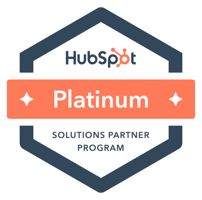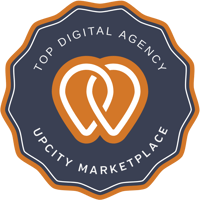What is Agile Sales Enablement?
Sales enablement is an iterative process designed to give sales reps the tools, training, as well as resources they need to unlock their fullest potential. The agile methodology provides a highly flexible, adaptable framework to this iterative process.
Simply put, it's no longer enough to "set it and forget it" when it comes to sales readiness, asset management, as well as engagement with prospects. Sales managers and executives must continuously explore new options in terms of software, platforms, workflows, training tools, and other resources to help their reps perform at a consistently high level. An agile system allows for such significant (even rapid) changes, with minimal disruption to the overall sales process.

Agile vs. Waterfall
In the realm of sales enablement, companies generally use one of two different methodologies: agile or waterfall. What is the difference between the two?
- The waterfall methodology is a linear model. In other words, change only comes from one direction (and is often a long time coming). As an example, a sales team may have to strictly follow a phone script for their outbound calls. That script will only change after a series of "top-down" approvals from the chain of command.
- The agile methodology is a dynamic model of continuous iteration. Development and testing activities typically run parallel to each other, instead of in sequential order. An agile methodology may allow sales reps to choose from one of several prompts during an interaction with the prospect.
While the waterfall model has its advantages, the beauty of agile management is its unsurpassed adaptability. There's an old saying that goes: "If it ain't broke, don't fix it."
But if it is broken, you want it fixed as soon as possible. That's what agile sales enablement allows you to do with your sales team. To quickly identify and fix issues that are hindering your reps from closing more deals.
The Core Concepts of Agile Sales Enablement
Agile sales enablement has a lot of moving parts. Let's focus on some core concepts that will inform just about any company's strategy:
1. Data-Driven Iterations
The big game-changer in the software development industry was instant access to user feedback. Instead of having to wait for weeks, months, or even years at a time to develop the "perfect" program, project teams were suddenly able to roll out updated versions of their software in real-time, based on user data.
Similarly, agile sales enablement is focused on creating a baseline process and then refining it "on the fly," based on prospect behavior and user data. Instead of making decisions based on a manager's opinion, this approach is all about getting feedback from the field. And then leveraging that feedback into a better overall process.
When we're talking about data-driven iterations, we mean a lot of iterations. You may need to refine your sales process on a weekly basis. This is depending on the feedback you receive from your prospects, the data you analyze from your CRM, and the relative success (or failure) of your team's efforts to meet their quota.
It's important to note that this iterative process can only work if there's buy-in from all sales-adjacent departments: marketing, customer support, IT, and so on. With everyone tuned to the same wavelength, sales leadership can work to identify current trends, project future ones, and then work with other teams to make any needed adjustments.
2. Prospect Alignment
Agile sales enablement can also help your team to discover early on whether their prospects' needs match up with the product they're selling. Think of it like weeding a garden. You want your reps to focus their time and energy on leads with a high upside. This means you must first "weed out" the prospects that will distract them away from that goal. For that reason, it may be helpful to implement sales processes designed to disqualify leads at the outset, if they're not a good fit.
In addition, you want your sales process to align with your typical buyer's journey. For instance, there should be plenty of content for each "funnel stage" the prospect is in, whether awareness, consideration, or decision. There also needs to be clear guidelines in terms of identifying the prospect's current stage. Of course, one buyer's journey may look quite different from another's, so flexibility is key.
As you continue to iterate your process, you'll be able to make needed adjustments that will direct your reps to high-value prospects and help them move their leads towards a final purchase decision.

3. Sales Enablement Tools
There are literally thousands of marketing and sales enablement tools on the market today. With North American companies spending upwards of $15 billion on these platforms. The problem is, you shouldn't just buy the latest and greatest software if it doesn't fit into your overall plan. Instead, you need to analyze your sales team's true needs, and which solutions would most effectively fill those needs.
Agile sales enablement can help you to incorporate new tools into your existing system (or in some cases, completely replace your existing system) in a logical, systematic manner. For example, with continuous feedback from your reps, you may discover a disturbing trend. Namely, delivering a personalized follow-up email sequence is a common bottleneck in your sales process. If so, what tools are available to address that pain point? Which software platforms will seamlessly integrate into your current CRM?
By answering these and related questions, you'll be able to make the best decision when selecting your new sales tool. Of course, platforms that feature advanced analytics and reporting in real-time are also an invaluable resource when making agile decisions for your team.
Take advantage of our free Hubspot CRM Configuration to start modernizing your sales process. This is a limited-time offer where we will design a sales pipeline specifically for your business. Start generating more revenue and improve your close rates by building your first high-performing sales pipeline on HubSpot at no cost. Simply schedule a discovery session with our team of HubSpot experts.
In summary, agile sales enablement allows you to make quick, data-driven, high-ROI decisions — and ultimately close more deals. If you'd like to learn more about how implementing agile sales enablement can benefit your business, reach out to our team of professionals at OverGo Studio for a free consultation.


